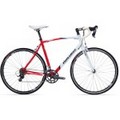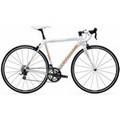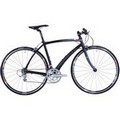Bicycle Racks for Touring
When most people think about bicycle touring, they slap on bicycle racks, add a couple of panniers, and stuff there gear into every available space. Then they head off, not knowing what troubles lie ahead. Fortunately, an experienced bicycle tourist knows that there is a logical madness to where and how they store their gear.
Load Distribution
When it comes to adding gear weight to your bicycle, I typically try to distribute the weight 40/60 percent, rear/front wheel. This weight distribution should keep your front wheel from lifting when going uphill. In addition, your rear wheel carries the majority of the weight from an upright riding position, more typical of a bicycle tourist with hands on the top part of the handlebars.
If you distribute your gear weight too much to the rear, then the stress on the rear spokes and tire will be excessive. With the combination of a dished rear wheel and improperly distributed weight, rear spokes will break more often than spokes on the front wheel.
To accomplish this 40/60 ratio, you need to experiment moving gear weight between your rear racks, front racks, and handlebar. You can test the weight distribution by placing your fully loaded bicycle (without rider) on a floor scale. Alternate between just the rear wheel on the scale and then just the front wheel. You can calculate the weight distribution ratio from these two weight numbers.
A few training rides with the fully loaded bicycle will allow you to get the feel of the bicycle. If needed, move some of the gear around until you can handle turns, up hill spinning, and down hill sprints.
Center Of Gravity
If your center of gravity is too high, then the bicycle will feel shaky and unstable. These characteristics can be extremely dangerous when standing up and pedaling, screaming downhill, and making quite turns.
You can position your center of gravity lower by putting heavy objects low on the racks. Also, a low rider front rack may be a better choice, thus lowering your center of gravity, than a rack that attaches front panniers high on the steering fork.
Steering Issues
One common misconception about front racks is that they drastically affect your steering and the ability to track straight on your course. I have found out that if you distribute your gear load properly and limit the weight in a handlebar pack, stability has never been an issue. For slight stability problems, I just moved some of the gear around until the bicycle handles properly.
Excess weight in the handlebar pack seems to affect steering more than weight on low rider racks. I limit the amount of items in the handlebar pack to only things that I need immediately and will take with me at a short stop. Otherwise, I stuff all my gear onto the racks, helping with center of gravity issues.
Specific Rack Issues
For bikes with suspension forks, most front racks won’t work due to the suspension travel. Since the fork will move up and down with the terrain, the racks must move along with the movement or the racks will bend and eventually break. This problem can also be the situation with rear suspension bikes. Some manufacturers offer racks compatible with suspension travel as one alternative.
Pulling a trailer instead of carrying panniers is another alternative. For a detailed discussion of bicycle trailers, please read our discussion and reviews of quality bicycle trailers .
Some Quality Racks
Below are a few bicycle racks that I am experienced using on tours. There are numerous other quality bicycle rack manufacturers that are not mentioned here. I will review these other brands when I become more familiar with them.
- Old Man Mountain. Their racks mount to your brake bosses and axle. This design allows them to fit frames with or without rack eyelets, with small rear triangles, with disc-brakes, and even with front and rear suspensions.
- Tubus. These racks are considered by many to be the most reliable and finest racks on the market. They are made from tubular steel and can be repaired fairly easily by an experienced welder. Their Expedition rack can carry up to 90 lbs. As the quality warrants, they may also be the most expensive racks. They offer a front rack for suspension forks.
- Jandd. They offer front rack weight capacities up to 25 lbs. and rear rack weight capacities up to 50 lbs. These bicycle racks are made from 3/8″ alloy aluminum and built strong. They are high quality and will satisfy most bicycle tourist at a reasonable price.




Fine way of explaining, and pleasant paragraph to obtain information concerning my presentation subject matter, which
i am going to convey in school.